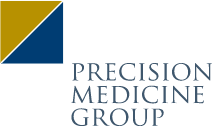How to move the needle.

By Read Roberts, PRECISIONscientia
The pharmaceutical industry is finally embracing the idea of engaging with key digital opinion leaders (DOLs) to aid in disseminating information, raising awareness, and educating healthcare professional (HCP) peers in their field. Many articles and case studies have been written about identifying DOLs, mapping their influence, and matching the right DOL to the right campaign. In the past year, an increasingly larger number of medical and commercial teams at pharmaceutical companies have begun to execute these campaigns. The question many companies are now asking is: How do we measure the effectiveness of these DOL efforts? In this article, I’ll go over methods that firms are using to gauge the impact of DOL campaigns and understand if they’re moving the needle in the right direction. When executed correctly, DOL campaigns can be even more successful than traditional campaigns.

Measuring the effectiveness of a DOL campaign starts with defining clear objectives. Is the aim to increase awareness, educate HCPs, or drive adoption and sales? Clear objectives will guide the measurement strategy. One client PRECISIONscientia is working with wants to increase awareness of an extremely rare genetic disorder. Physicians diagnosing patients were unaware that the root of an individual’s disorder could be traced to their DNA, and it became important to the client to raise awareness among HCPs in fields treating later-manifested conditions. Spreading the word about this underlying cause of the genetic disorder and the related complications could lead to testing and proper diagnosis.
Once a campaign’s clear objectives are defined, the next step is selecting relevant key performance indicators (KPIs). These indicators differ depending on the objective, and it is good to have a “Swiss army knife” approach to selecting KPIs to handpick metrics that align most closely with a brand’s objectives. In some cases, reach and number of impressions will be key, while in other cases, engagement metrics, conversion rates, and even qualitative survey data will provide support for the effectiveness of a campaign. In the rare genetic disorder client case, the key KPIs assessed were mentions of the disorder by name among the target audience and engagement with posts related to key research.
After the overlaying campaign objective and KPI metrics to support and measure progress are clear, the next big question is how to quantify these signals. In some campaigns, quantitative indicators will provide the most clear, unbiased report of the KPIs. There are many options available for capturing and reporting analytics, though not many are tailored to the unique needs of companies in the pharmaceutical field. Google Analytics and email campaign tools are popular for capturing quantitative metrics, and they are easy to set up. However, these tools are mostly limited to measuring activity and interactions with assets that the business controls, such as websites, landing pages, and email campaigns. To measure the activity of sources outside the business’s domain, it is necessary to use tools that tap into APIs (Application Programming Interfaces – special tools to access external data sources) and public data available across external social media channels. A number of social listening platforms can access this information for influencer-specific campaigns. PRECISIONscientia has developed a premier pharmaceutical industry-specific tool, called DOL MAP, which captures social analytics in a format that is most helpful for clients in health care. Tools like these can help capture, analyze, and measure many straightforward KPIs, such as reach, impressions, engagement, and conversions.
In some cases, companies may need more than simply quantitative indicators; there may be a need for additional qualitative assessment. Surveys, interviews, and analysis of posted content within relevant conversations may be needed to understand whether campaign goals are being met. Moreover, focus groups or digital advisory boards can provide a forum for selected DOLs to provide insights on pharmaceutical tactics in communication and social media strategy.
To continue in the real-life example of the client in the rare genetic disease area, PRECISIONscientia used a combination of quantitative and qualitative tools to measure KPIs. Our in-house tool, DOL MAP measured disease and treatment awareness across social media channels. In one case, the platform allowed the client to see how key research was being disseminated across channels within hours of release at a congress. It also allowed visibility on how posts by DOLs who had been provided with approved educational materials were performing and being engaged with, and a trove of tangible insights resulted from the endeavor.
At this point, we’ve defined KPIs and have a way to measure them – we’re all set now, right? Well, not quite; measurement should be an active, ongoing process to ensure operations are going in the right direction (and if not, it should give us feedback on how to adjust future action). At the start of the campaign, the specified KPIs should be captured to provide a benchmark on real-time progress, in the vein of the popular and relatable “how it started…how it’s going” meme. Beyond this, KPIs should continue to be captured and reported regularly. The analytics tools discussed earlier can help, and ideally should provide visualization reports to monitor change over time. In the efforts of PRECISIONscientia in the DOL space, clients can see how continued tactics are moving the needle and having a net positive effect. Some months or quarters will not always look encouraging, but this feedback is perhaps even more valuable, as it can guide needed change. PRECISIONscientia’s DOL MAP platform collects metrics on a daily basis and pulls together monthly reports to crystallize insights. There is no set best practice for regularity of capturing measurement snapshots, but ideally, there should be a happy medium that works for an organization.
When executed and measured correctly, DOL campaigns can prove to be as successful, if not more successful, than traditional campaigns. Just like key opinion leaders (KOLs), DOLs convey trust and credibility to communications — healthcare influencers have achieved online followers because other HCPs valued their opinions and curation of research and news. Beyond this, DOLs have access to targeted HCP audiences and often reach more of them in a single day than a traditional KOL would at a major speaking event. The industry should be willing to embrace the changing dynamics of thought leader engagement, and having measurable indicators of success should help give companies the confidence to embark on these new methods of communication.
Published OCTOBER 3, 2023, PharmaLive

Read Roberts is director, KOL Data Solutions at PRECISIONscientia where he leads the development and execution of software products and services related to finding, understanding, and prioritizing HCP experts in specific fields with the greatest potential for beneficial collaboration opportunities. He works closely with both clients and client teams to execute on projects related to the products and services he developed, as well as the evolution and enhancements to these and the up-and-coming KOL-related software products. Roberts is a life science data expert with more than 20 years of experience providing information-driven healthcare and pharmaceutical strategies and solutions. He has an entrepreneurial background, having founded software and services business aiding clients in the identification and mapping of key opinion leaders (KOLs).







